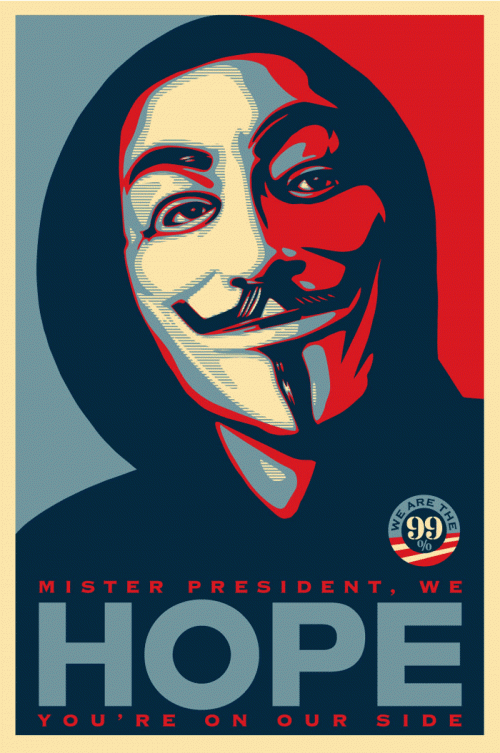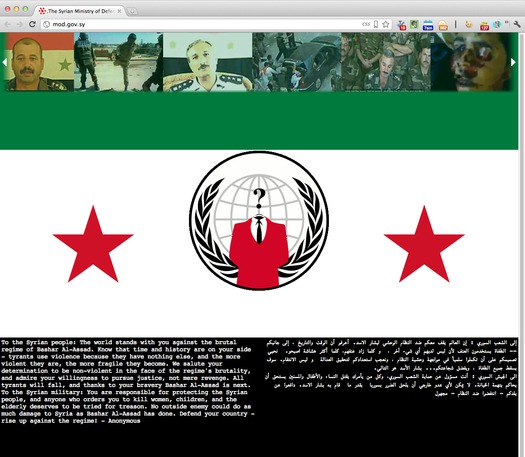
Occupy Hope, Shepard Fairey
In the most recent Radiolab podcast, Jad Abumrad and Robert Krulwich chat with Roman Mars about his 99% Invisible podcast. The episodes shared and discussed are about sound design for gadgetry; an interesting street artist; and the work of Nicholas Felton. It's a good introduction to this "tiny radio show about design," which I like quite a bit. (Perhaps you've noticed the link to 99% Invisible in my blogroll at right?)At one point in the Radiolab conversation, Mars summarizes his mission as simply to get listeners "to notice more things." That sounds modest, but obviously it's a mission I endorse, because my own goals are often similar. Previously I've written here about the Google Maps pin and the waveform as "stealth icongraphy," for instance. Another example might be the visual identity of Anonymous: Despite being a kind of non-organization, its logo and its hijacking of the Guy Fawkes mask from V for Vendetta have established a familiarity-through-symbols that many multimillion-dollar brands and richly funded political campaigns would kill for.
For instance, it's a real tribute to the power of the Fawkes mask to see it adapted by Shepard Fairey (who knows a thing or two about iconic power), above. I wonder how many people these days associate the Fawkes mask exclusively with Occupy Wall Street, and don't realize its Anonymous roots? And below: An image of the Anonymous logo evidently left for a time on a Syrian government Web site. I was already interested in the logo when this happened, but I found it pretty astounding, and it's part of what motivated me to find out what I could about how this set of images came together to represent Anonymous.

Anonymous logo on (hacked) Syrian government website, via The Next Web
I wrote about this subject recently on Slate, but I bring it up here because I also had the highly interesting experience of converting that reporting/observation into an audio piece — for an episode of 99% Invisible.
So if you've never checked the show out, here is your chance:
99% Invisible-42- Recognizably Anonymous by Roman Mars
